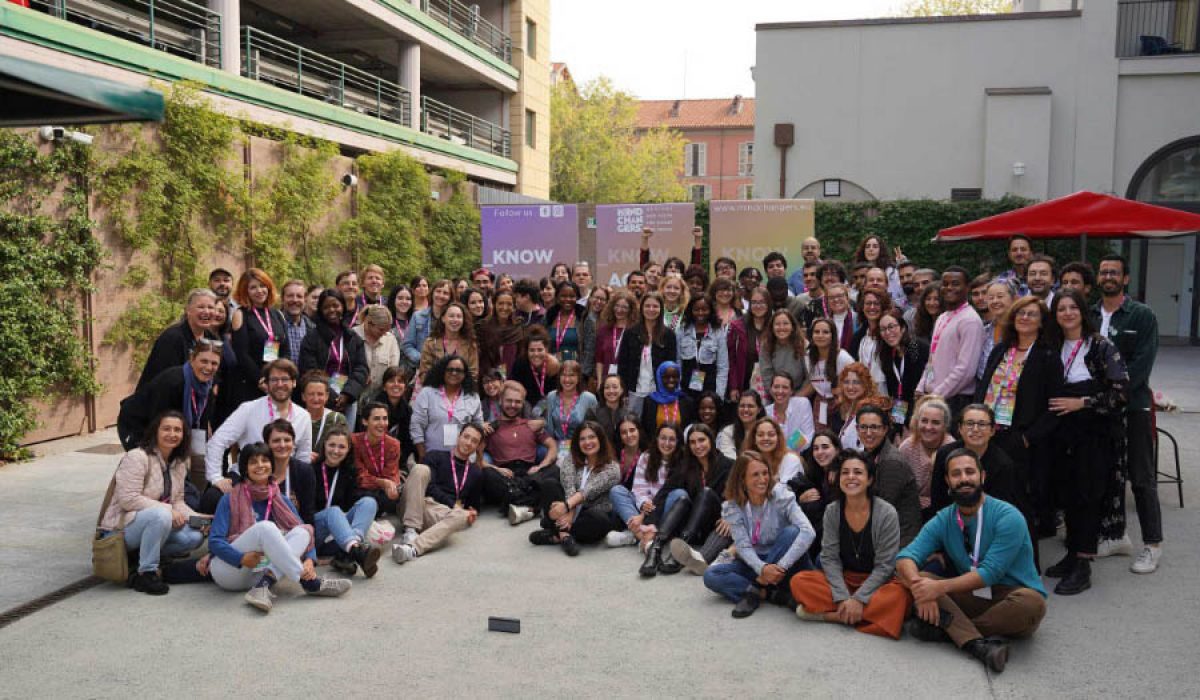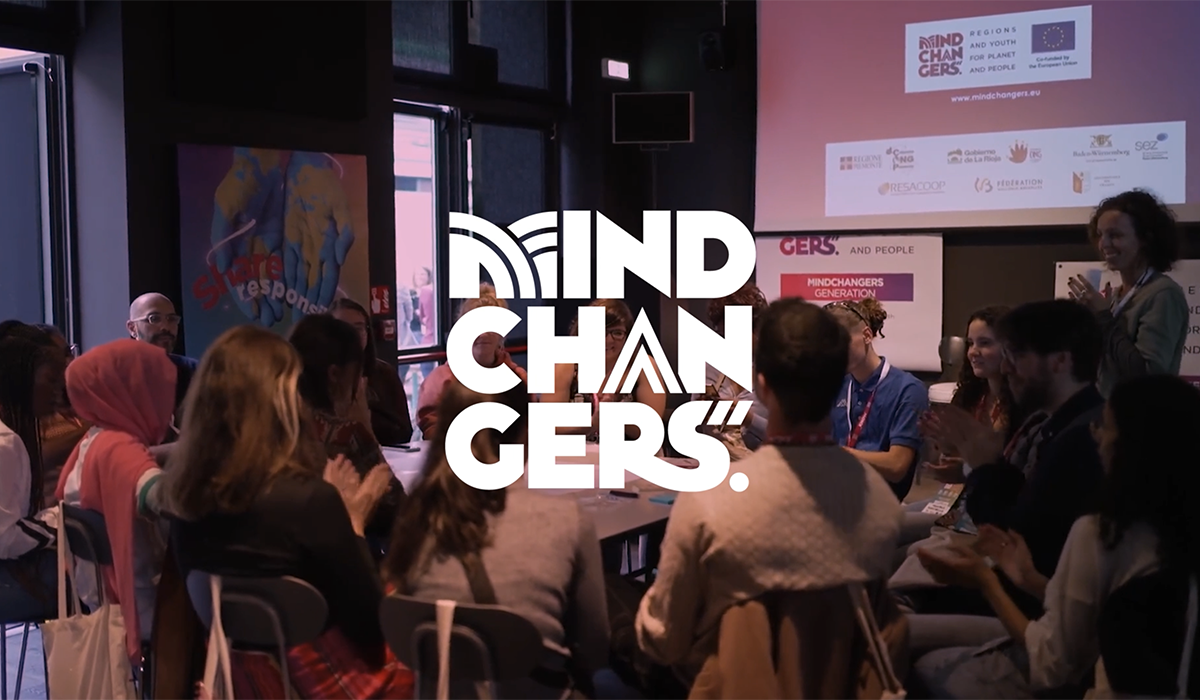“οὐ τóπoς” is the ancient greek locution standing for “no place”.
In English It translates “Utopia”. and was coined by Sir Thomas More to entitle one of his most famous works.
Utopia could be any place.
Utopia could bear any set of principles driving people actions and behaviors.
Utopia could have any institutions regulating people’s interaction or no institutions at all”.
Thus, if utopia can be whatever, wherever and whenever, people can dream of it without any down-to-earth approach. This leads to the aspiration for an ideal society in which downsides and injustices of the real one are healed and redeemed.
From the 4th to the 6th of October more than 100 youths gathered in Turin to imagine any radical Youthopia that can help us deal with the climate crisis and all its related issues (migrations, inequalities, and poverty to mention just few amid the many).
“Mindchangers Generation” welcomed them at Combo along with delegations from the 9 consortium partners working on the project.
It has been the first Mindchangers international youth meeting of the 3 planned: guess where the next one will be!
This kind of gatherings are meant to create creative, constructive and inclusive places to elaborate the experiences youth are having in the 6 partner countries of the consortium (54 CSOs and LAs projects got a grant in the first call for proposal).
Three days workshop to imagine many “Youthopias”
Since More’s “Utopia” many other Utopias have been imagined by monks, writers and philosophers.
“The city of the Sun” of the Italian Dominician philosopher Tommaso Campanella imagined an egalitarian theocratic society where property is held in common and where the division of labour is equal thus not requiring more than one daily our of work each. Another Utopian novel was Francis Bacon “New Atlantis”. In the novel a crew of a European ship discovers a mystical island in the middle of the Pacific Ocean whose inhabitants are depicted with ideal qualities such as generosity, enlightenment, dignity, piety and public spirit.
These Utopias were grounded in their times. They were inspired on the one hand from the exploration and discovery of the New World, on the other they were inspired by the Counter-Reformation process that followed Martin Luther Protestant Reformation.
Thus how would the next radical Utopia looks like?
Since Mindchangers is willing to increase youth engagement towards climate change and migration issues, the three-days event foresaw a tripartite workshop scheme based on the Mindchangers motto “Know, Act, Change”.
The hundreds of youth were divided in six main groups addressing climate change and migration issues and respectively focusing on three types of action: Policy action, Territorial action and Media action.
The workshop has been facilitated by Itinerari Paralleli, a social enterprise, that helped moderate youth interactions and discussions aimed at developing different Youthopias. Indeed the facilitators encouraged the participants to be respectful of others words or ideas and to remain open-minded. Everyone had the opportunity to voice his-hers idea and to be listened by the group.
#Know session
The first day was the moment to get to KNOW each other and to dive deeper into the topics at stake. For instance the groups working on Advocacy action chose the topics to work on the next two days: “Citizenship and right to vote for everyone” concerning Migration and a mixed form of two ideas on the topic of climate change which was “Environmental taxation in order to realize a Universal basic income”.
While the groups working on territorial action came up with three main ideas: Educational empowerment (won the most votes) presented as a flower that opens up; sustainable and accessible cities (created a short video, in the form of a commercial, to advert their idea); Technology (digital gardens, perma-culture etc.).
#Act session
The day 2 was the time for the ACT session. The Territorial action groups worked in small subgroups using their mobile phones to look for territorial actions (benchmarking analysis) and to select a minimum of 3 different actions as best practice examples.
Among the different example are worth mentioning those of “memory buses” going to small communities to collect memories, to find short stories about their migration histories and the food festival “Flavours sans Frontiers” – featuring migrants cooking with French chefs and then share their recipes.
The benchmarking analysis was rendered by the facilitators in a post-its cloud summarizing the best practice examples selected by the subgroups, including examples of actions, events or programmes that could be organized at territorial level, such as meetings, games, training for trainers, cinema/movies, workshops, eco-hiking, dance shows, youth competitions, videos and debates.
In preparation of the last day, youth were demanded to produce a concept-note about their plans and action strategies in order to present them to the participants of the other groups. The concept-note was intended to answer these questions: what – whom to – when and how – whom (with and against).
#Change Session
The afternoon of the second day, Mindchangers Generation opened the CHANGE session with a public event.
More than 150 people gathered at Combo to attend the public event featured with many speeches by Locals institutions representatives (Davide Gandolfi), advocacy and no-profit organizations representatives (Stefania Di Campli, Kwanza Musi dos Santos, Emanuele Russo, Aline Yasmin Dalvi Guimaraes) and international institutions representatives (Viviana Galli and Omnia El-Omrani).
The second day ended with plans and action strategies that youth could replicate in their countries. These ideas went through a deep and thorough strengths, weaknesses, opportunities, and threats (SWOT) analysis.
Urgent times require radical yet simple solutions
The 6th of October was the time for them to share their ideas within a market-like place where all the participants gathered with their concept-notes (posters) to present their work to everyone.
The presentations were fun, energetic, quite theatrical in some cases, each trying to find the best ways to be more convincing. For example, one group prepared its presentation in the form of a theatrical performance and the youth acted as if they were migrants in their utopia.
Thus what these Youthopias are about?
For now It’s worth knowing that all of them had been developed within a common baseline. Since we are facing the certainty of climate collapse, there is no longer time for weak and false promises, therefore the imagination of radical utopias based on the principles of sustainability, solidarity and justice are now closer than ever to their concrete realization.
In the upcoming weeks a dedicated article will feature all these Youthopias.



